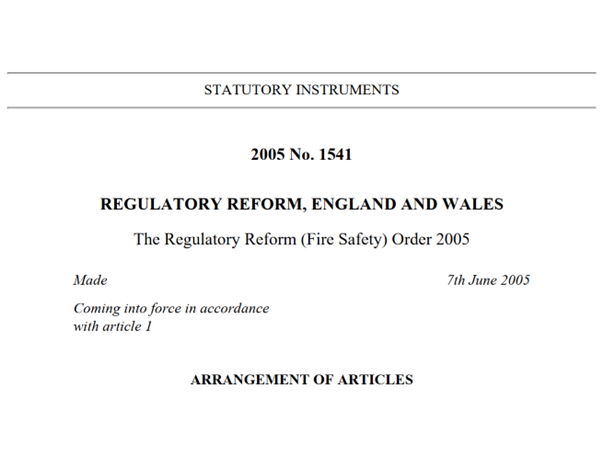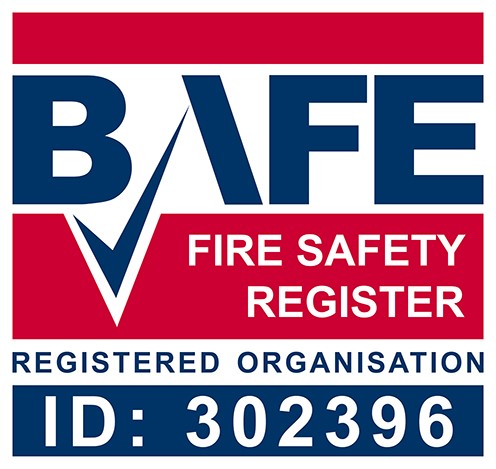Fire risk assessment
We provide comprehensive fire risk assessments to commercial clients, landlords, and businesses across the UK.
What is a Fire Risk Assessment?
A fire risk assessment is an organised and methodical look at your premises and the activities carried out there. The assessment looks at the likelihood that a fire could start and the potential consequence to life safety to those in and around the premises. The aims of the fire risk assessment are:
- To identify the fire hazards.
- To reduce the risk of those fire hazards causing harm to as low as reasonably practicable.
To decide what physical fire precautions and management arrangements are necessary to ensure the safety of people in and around your premises if a fire does start.
The terms ‘hazard' and ‘risk' are
- Hazard: anything that has the potential to cause harm.
- Risk: the chance of that harm occurring.


Do I need a Fire Risk Assessment?
If you are an owner, landlord or occupier of business or other non-domestic premises, you'll be responsible for fire safety. You are known as the ‘responsible person'.
The Governments fire safety legislation, the Regulatory Reform (Fire Safety) Order 2005, requires the ‘Responsible Person', to make a suitable and sufficient fire risk assessment.
A written fire risk assessment is required under the following circumstances:
- From 1 October 2023, new fire safety legislation comes into effect which will impose new duties on businesses and buildings owners. The changes in legislation are also known as Section 156 of the Building Safety Act 2022, and they are in addition to the Fire Safety (England) Regulations 2022 and the Fire Safety Act 2021 which commenced last summer.
- The Fire Safety Order is the primary fire safety legislation in England and Wales, and it applies to all non-domestic premises as well as the communal parts of residential buildings. Changes to this legislation have been introduced through the Building Safety Act 2022 and represent the next phase of the governments fire safety reform programme.
- The previous requirement to have a written fire risk assessment only applied in certain circumstances (e.g. where the responsible person employees five or more persons). This will no longer be the case, and if you are a responsible person, then you will need to record both your fire risk assessment and fire safety arrangement in full, regardless of the size or purpose of the business or premises.
A pre-occupation fire risk assessment could be undertaken prior to occupancy, which would establish the fire safety requirements for the building. Where a building is being refurbished or the use or occupancy of the building is changing, a full fire risk assessment would generally not be advised at that time. Once the works have been completed, a suitable and sufficient fire risk assessment should be carried out and recorded.
If prior to starting or during the construction works you would like assistance with fire safety concerns, requirements or advice, JGS Fire Safety Ltd can assist you as part of our Fire Safety Consultancy Service. Please look at the section of ‘Fire Safety Consultants' within this website for more details or call 01268 858231, or email info@jgsfiresafety.co.uk.
Can you afford not to have a fire risk assessment?
Failure to have a suitable and sufficient fire risk assessment recorded could lead to the local Fire Authority taking enforcement action against you, which would impact on your business.
In the unfortunate event of a fire situation at your premises, your insurance policy may be invalidated if you have not got a suitable and sufficient fire risk assessment or if you have not implemented the actions detailed within your fire risk assessment.
How can JGS Fire Safety Ltd assist you with your fire risk assessment?
JGS Fire Safety Ltd is a BAFE Third Party Accredited company, who have been audited by the SSAIB under the BAFE Life Safety Fire Risk Assessment SP205 Scheme.
Guy Solly AIFireE, MIFSM, one of the business Directors, is an Associate Member of the Institution of Fire Engineers (IFE) and a Tier 3 Nationally Accredited Fire Risk Assessor (NAFRAR) listed on the Institute of Fire Safety Managers (IFSM) Register.
Like all of our Assessors, Guy served in the Fire Service until October 2016 when he retired after 30+ years both operational and within the Fire Safety Department. Many of our Assessors are still service within the Fire Service or have recently retired from operational and Fire Safety roles.


JGS Fire Safety has assessed hundreds of premises, including but not limited to
- Offices and shops
- Local authority buildings
- Places of assembly e.g. village halls and wedding venues
- Sports facilities
- Warehouses, factories and industrial units
- Pubs, restaurants and hotels
- Educational premises
- High risk sites
- Listed buildings
- Residential care premises
- Construction sites
- HMOs (houses in multiple occupation)
- Type 1 fire risk assessments for residential blocks of flats
- Specialised housing, including sheltered housing, extra care housing and supported housing
We have the knowledge and experience to provide our clients with guidance, advice and assistance with their fire risk assessments and other fire safety related work e.g. Fire Engineering and Fire Safety Consultancy.
What do I need to do next?
See how we can assist you in obtaining a ‘suitable and sufficient' fire risk assessment in accordance with the requirements of the Regulatory Reform (Fire Safety) Order 2005.

The fire risk assessment would include assessing the following particular aspects of fire safety:
- Fire loss experience
- Fire hazards
- Fire prevention
- Storage and handling of flammable liquids and gases
- Housekeeping
- Means of escape
- Compartmentation
- Flammability of linings
- Emergency escape lighting
- Fire safety signs and notices
- Fire detection and fire alarm systems
- Fire extinguishing systems and appliances
- Smoke control systems
- Facilities for use by the fire and rescue service
- Arrangements for management of fire safety.
- Fire procedures
- Training and drills
- Testing and maintenance
- Records
Contact Our Team
Contact our team to arrange fire risk assessment, training or consultancy services today: Call 01268 858231 or email info@jgsfiresafety.co.uk
